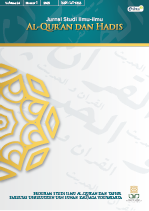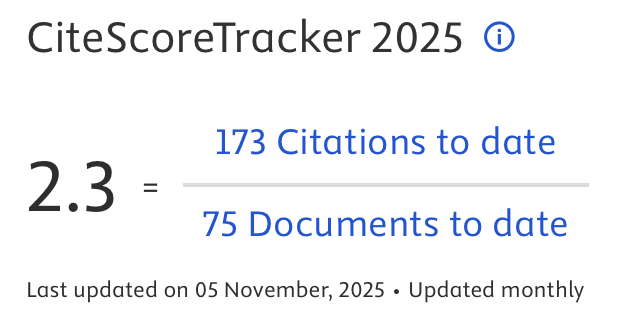Edutainment in Qur'an Publishing: Integrating Learning Theories and Entertainment in Indonesian Mushaf
DOI:
https://doi.org/10.14421/qh.v25i1.4666Keywords:
Edutainment, Publishing Al-Qur'an Mushaf, Publishing Innovation, Education, Mushaf, IndonesiaAbstract
The publication of Qur'an in Indonesia reflects the direction of the publishing industry, which emphasizes products that are not only informative but also interesting and entertaining for readers. This phenomenon was triggered by a response to society's need for access to additional, more complete information. However, innovations like color tajwid have sparked controversy. Further research into the publication of the Qur'an in Indonesia is necessary to fully understand its impact. This study, employing the concept of edutainment, examines how Al-Qur'an manuscripts in Indonesia integrate learning theories and edutainment approaches. Utilizing analytical descriptive methods alongside philosophical-speculative and phenomenological approaches, fifteen manuscripts were analyzed. These manuscripts effectively meet readers' needs while incorporating educational theories and edutainment strategies. Additionally, there is an emphasis on technological innovation, particularly in visual learning methods that utilize both technological and non-technological features. Despite these advancements, the teacher's role remains crucial in promoting independent learning, especially within the context of Qur'an study.
 Abstract viewed: 767 times
|
Abstract viewed: 767 times
|
 PDF downloaded = 519 times
PDF downloaded = 519 times
References
Ahsin Sakho Muhammad. ‘Etika Penerbitan Al-Qur’an: Beberapa Terbitan Mushaf (Bagian 4) - Lajnah Pentashihan Mushaf Al-Qur’an’. Lembaga Pentashihan Mushaf Al-Qur’an Kemenag RI, 24 September 2012. https://lajnah.kemenag.go.id/artikel/etika-penerbitan-al-qur-an-beberapa-terbitan-mushaf-bagian-4.html.
Aiman Rusydī Suwaid. At-Tajwīd al Muṣawwar. 1st ed. Vol. 1. Damaskus: Maktabah Ibn Jazari, 2011.
Akbar, Ali. ‘Pencetakan Mushaf Al-Qurân Di Indonesia’. SUHUF 4, no. 2 (2015): 271.
Al-Qolam. ‘Al-Qur’an Talking Pen New Maqamat For Kids.’ alqolam.com, 19 January 2022. https://alqolam.com/product/al-quran-talking-pen-new-maqamat-for-kids/.
Anikina, Oksana V., and Elena V. Yakimenko. ‘Edutainment as a Modern Technology of Education’. Procedia-Social and Behavioral Sciences 166 (2015): 475–79.
Arifin, Muhammad, Ayu Puspita Sari, and Adriawan Maulana Tama. ‘Implikasi Teori Belajar Sibernetik Dalam Proses Pembelajaran Dan Penerapan IT Di Era Modern’. Prosiding Seminar Nasional Pendidikan Berkemajuan dan Menggembirakan, 2017.
Bizawie, Zainul Milal. Masterpiece Islam Nusantara: Sanad Dan Jejaring Ulama-Santri, 1830-1945. Pustaka Compass, 2016.
DePorter, Bobbi, and Mike Hernacki. Quantum Learning: Unleashing the Genius in You. New York, N.Y: Dell Publishing, 1992.
Déroche, François. Qurʾans of the Umayyads: A First Overview. Leiden Studies in Islam and Society, volume 1. Leiden Boston (Mass.): Brill, 2014.
Dutton, Yasin. ‘Red Dots, Green Dots, Yellow Dots, and Blue: Some Reflections on the Vocalisation of Early Qur’anic Manuscripts – Part I.’ Journal of Qur’anic Studies 1, no. 1 (April 1999): 115–40. https://doi.org/10.3366/jqs.1999.1.1.115.
Elwina Rosa and Dkk. ‘Penerapan Strategi Pembelajaran Reconnecting Untuk Meningkatkan Hasil Belajar Siswa Pada Mata Pembelajaran PAI Dan Budi Pekerti Di Kelas XI TBSM SMKN 1 Kuantan Hilir’. Jom FTK UNIKS 3, no. 1 (2022).
Fadlly, Harits. ‘Tajwid Warna Dalam Mushaf Al-Qur’an Standar Indonesia’. SUHUF 13, no. 2 (2020): 339–54.
Faizin, Hamam. Sejarah Pencetakan Al-Qur’an. Era Baru Pressindo, 2012.
Fatchiatuzahro. Edutainment Dalam Mushaf Al-Qur’an Indonesia. Edited by Muhammad Khutub. 1st ed. Tangerang: Lembaga Kajian Dialektika, 2022.
Fikriyati, Ulya. “Architectural Interpretations of Qur’anic and Hadith Influences in Traditional Indonesian Mosques During the Walisanga Era.” Jurnal Studi Ilmu-Ilmu Al-Qur’an Dan Hadis 24, no. 2 (July 31, 2023): 253–84. https://doi.org/10.14421/qh.v24i2.4657.
Gardner, Howard. Multiple Intelligences: The Theory in Practice. New York: Basic Books, 1993.
Hamid, Moh Sholeh. Metode Edutainment. 1st ed. Yogjakarta: DIVA Press, 2012.
Hamruni. ‘Konsep Edutainment Dalam Pendidikan Islam’. PhD Thesis, UIN Sunan Kalijaga Yogyakarta, 2008.
H.D. Schunk. Learning Theoris: An Educational Perspective. 6th ed. Boston: MA Person, 2012.
Karen Markowitz and Erick Jansen. Great Memory. USA: Corwin Press, 1999.
Khairuddin bin Said and Jamaluddin bin Adam. ‘Corak Tāriq Sanad Al-Qur’an Di Negeri Pahang’. Centre of Quranic Research International Journal, n.d.
Luthfillah, Muhammad Dluha. ‘Patriarki Dalam Kitab Suci Yang Terkomodifikasi’. SUHUF 12, no. 2 (2019): 281–301.
M. Thobroni. Belajar Dan Pembelajaran: Teori Dan Praktek. Yogyakarta: Ar-Ruzz, 2015.
MacLean, Paul D. The Triune Brain in Evolution: Role in Paleocerebral Functions. New York: Springer Science & Business Media, 1990.
Made Wena. Strategi Pembelajaran Inovatif Kontemporer. 10th ed. 10. Jakarta: Bumi Aksara, 2013.
Madzkur, Zaenal Arifin. ‘Kecendrungan Masyarakat dalam Memilih Mushaf Al-Qur’an Standar Indonesia di Pulau Jawa’. Ṣuḥuf, 1, 9 (June 2016).
Maghfirah Pustaka. ‘Al-Qohhar: Al-Qur’an Tajwid Pelangi Sedang’. maghfirahpustaka.id, 2016. https://maghfirahpustaka.id/produk/al-qahhaar-quran-tajwid-terjemah-pelangi-sedang/.
Meier, Dave. ‘The Accelerated Learning Handbook: Panduan Kreatif Dan Efektif Merancang Program Pendidikan Dan Pelatihan’. Bandung: Kaifa, 2002.
Muhaimin. Kawasan Dan Wawasan Studi Islam. 1st ed. Jakarta: KENCANA, 2007.
Muhajirah, Muhajirah. ‘Basic of Learning Theory:(Behaviorism, Cognitivism, Constructivism, and Humanism).’ International Journal of Asian Education 1, no. 1 (2020): 37–42.
Muhammad bin Al-Husain Al-Jūrī. Akhlāq Ahl Al-Qur’ān. Beirut: Daarul Kutub Ilmiyyah, 2003.
Muhammad Edy Saputro. ‘Mushaf 2.0 Dan Studi Al-Qur’an Di Era Muslim Tanpa Masjid’. Jurnal Miqot, 2, XLII (2018): 258–59.
Nadwah Ṭibāʽah Al-Qur’an al-Karīm. ‘Nadwah Ṭibāʽah Al-Qur’an al-Karīm wa Nasyruhu baina al-Wāqi’ wa al-Ma’mūl’, Desember 2014. https://qprint.qurancomplex.gov.sa/.
Nasution, Abdul Gani Jamora. ‘Pembelajaran Edutainment: Tinjauan Filosofis Pendidikan Islam’. Ihya Al-Arabiyah: Jurnal Pendidikan Bahasa Dan Sastra Arab 3, no. 2 (2017).
Noeng Muhajir. Metodologi Penelitian Kualitatif. 4th ed. Yogjakarta: Rake Sarasin, 2002.
Nugraha, Eva. ‘Tren Penerbitan Mushaf Dalam Komodifikasi Al-Qur’ān Di Indonesia’. Ilmu Ushuluddin 2 (2015): 3.
Rohimin. ‘Jejak Dan Otoritas Percetakan Mushaf Di Indonesia’. NUANSA IX (Desember 2016): 2.
Rose, Colin Penfield, and Malcolm J. Nicholl. Accelerated Learning for the 21st Century: The Six-Step Plan to Unlock Your Master-Mind. New York: Delacorte Press, 1997.
Ruqayya Y. Khan. ‘Did a Woman Edit the Qur’ān? Hafṣa and Her Famed “Codex”’. Journal of the American Academy of Religion, Oxford University Press 82 (March 2014): 1.
Sami’ah. ‘LPMQ dan Prodi IAT Gelar Pelatihan Pentashihan Mushaf Al-Quran Tajwid Warna’. Institut Ilmu Al Quran (IIQ) Jakarta, 27 February 2020. https://iiq.ac.id/berita/lpmq-dan-prodi-iat-gelar-pelatihan-pentashihan-mushaf-al-quran-tajwid-warna/.
Sana Mirza. ‘Developing the Harari Muṣḥaf: The Indian Ocean Milieu of Ethiopian Scribes.’ Edinburgh University Press 1 (2023). https://www.jstor.org/stable/10.3366/j.ctv32vqh22.5.
Selman, Victor, Ruth Corey Selman, and Jerry Selman. ‘Quantum Learning: Learn Without Learning.’ International Business & Economics Research Journal (IBER) 2, no. 4 (25 February 2011). https://doi.org/10.19030/iber.v2i4.3787.
Silberman, Melvin L. Active Learning: 101 Strategies to Teach Any Subject. Boston: Allyn and Bacon, 1996.
Siregar, Nurliani, and Hartini Nara. ‘Belajar Dan Pembelajaran’. Penerbit Ghalia Indonesia, 2015.
Sriyadi and Hartanto. ‘Meningkatkan Psikomotorik Anak Berbasis Animasi Huruf Hijaiyah Dengan Metode Follow the Line’. Paradigma XXI, no. 1 (2019).
Swediati, Nonny. ‘Metode Pembelajaran Karakter Berdasarkan Dinamika Perkembangan Otak’. In Prosiding Seminar Nasional Milleneial 5.0 Fakultas Psikologi UMBY, 2020.
Tim Al-Hira. Audio Digital Al-Qur’an Dan Al Mubarak Word by Word. Bandung: Al-Hira Indonesia, 2012.
Tim Al-Qolam. Mushaf Maqamat for Kids. Jakarta: Al-Qolam, 2015.
Ulin Nuha. Metode Super Efektif Pembelajaran Bahasa Arab. Yogjakarta: DIVA Press, 2012.
Uno, Hamzah B. Orientasi Baru Dalam Psikologi Pembelajaran. Bumi Aksara, 2023.
Y. Abidin. Pembelajaran Membaca Berbasis Pendidikan Karakter. Bandung: Refika Karakter, 2012.
Yuberti, Yuberti. TEORI PEMBELAJARAN DAN PENGEMBANGAN BAHAN AJAR DALAM PENDIDIKAN. Vol. 1. Bandar Lampung: Anugerah Utama Raharja, 2014. http://www.aura-publishing.com.
Zainal Arifin Madzkur. ‘Al-Rasm al-’Uthmānī Fī al-Muṣḥaf al-Mi‘yārī al-Indūnīsī ‘inda al-Dānī Wa Abī Dāwud’. Studia Islamika 27 (2020): 1.
Zaman, Badrus. ‘Edutainment Dalam Mata Pelajaran Pendidikan Agama Islam’. MUDARRISA: Jurnal Kajian Pendidikan Islam 8, no. 1 (2016): 117–44.
Downloads
Published
How to Cite
Issue
Section
License
Copyright (c) 2024 Fatchiatuzahro, Imronudin; Riza Muhammad Reza

This work is licensed under a Creative Commons Attribution-NonCommercial-NoDerivatives 4.0 International License.
Publishing your paper with Jurnal Studi Ilmu-ilmu al-Qur'an dan Hadis means that the author or authors retain the copyright in the paper. Jurnal Studi Ilmu-ilmu al-Qur'an dan Hadis uses license CC-BY-NC-ND or an equivalent license as the optimal license for the publication, distribution, use, and reuse of scholarly works. This license permits anyone to copy and redistribute the material in any medium or format and must give appropriate credit, provide a link to the license, and indicate if changes were made. If you remix, translate, transform or build upon the material you may use it for private use only and not for distribution. Jurnal Studi Ilmu-ilmu al-Qur'an dan Hadis granted an exclusive non-commercial reuse license by the author(s), but the author(s) are able to put the paper onto a website, distribute it to colleagues, give it to students, use it in your thesis, etc, so long as the use is not directed at a commercial advantage or toward private monetary gain. The author(s) can reuse the figures and tables and other information contained in their paper published by Jurnal Studi Ilmu-ilmu al-Qur'an dan Hadis in future papers or work without having to ask anyone for permission, provided that the figures, tables, or other information that is included in the new paper or work properly references the published paper as the source of the figures, tables or other information, and the new paper or work is not direct at a private monetary gain or commercial advantage.
Jurnal Studi Ilmu-ilmu al-Qur'an dan Hadis journal Open Acces articles are distrubuted under the Creative Commons Attribution-NonCommercial-NoDerivatives 4.0 International (CC BY-NC-ND 4.0). Article can be read, copy and redistribute the material ini any medium or format under the following conditions:
Attribution — You must give appropriate credit, provide a link to the license, and indicate if changes were made. You may do so in any reasonable manner, but not in any way that suggests the licensor endorses you or your use.
NonCommercial — You may not use the material for commercial purposes.
NoDerivatives — If you remix, transform, or build upon the material, you may not distribute the modified material.










